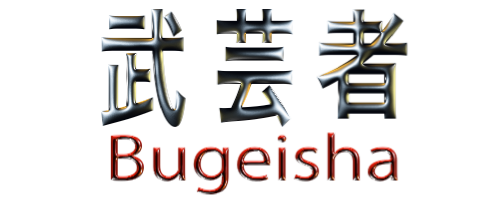Hey everyone it's been a long time!!
As promised this time I will introduce to you one of the most underrated martial arts which is called Bujinkan Ninpo Taijutsu(or Ninjutsu if you like).
First a little historical facts for the origin of this system.
The Bujinkan (武神館) is an international ninjutsu organization based in Japan and headed by Masaaki Hatsumi. It is best known for its association with the ninja. The system taught by this group, called Bujinkan Budō(or Ninpo) Taijutsu, consists of nine separate martial arts traditions.
Several of the above martial arts taught in the Bujinkan can allegedly be traced back to the Iga region of Japan and were developed and used by the Yamabushi and the Ninja. The arts said to be in the Iga-ryu Ninjutsu tradition include Gyokko Ryu, Koto Ryu, Gikan-ryū and Shinden Fudo Ryu. The alleged connection to Ninjutsu is through Hatsumi's teacher Takamatsu Toshitsugu who was, among other things, permitted to copy the Amatsu Tatara scrolls. Takamatsu Toshitsugu's grandfather was a samurai and a direct descedent of the founder of Gyokko Ryu (the Gikan-ryū was passed to Takamatsu Toshitsugu through another source). Other arts, such as Takagi Yoshin Ryu and Kukishinden Ryu were developed and used by members of Japan’s Samurai families. Today the Bujinkan incorporates techniques from all of the above 9 ryu and others.
In 1843 several of the Bujinkan ryūha were mentioned in the Kakutogi no Rekishi (“The History of Fighting Arts”).[1] Although details of the ryūha were omitted, the publication states, "even though they are not mentioned in this particular periodical, there are several schools that are well-known for being ‘effective arts’ (jitsuryoku ha)." Among the schools listed in this section are Gyokko Ryū, Gikan-ryū Koppōjutsu, Gyokushin-ryū Ninpō, Kukishin Ryu, Takagi Yōshin-ryū Jūtaijutsu and Asayama Ichiden-ryū (which is not part of the Bujinkan’s nine schools but was studied by Hatsumi via Takashi Ueno). The Bujinkan as a whole has been recognised by the Zen Nippon Todo Renmei (All Japan Sword Federation). However, the recorded history and lineage of several of the ryūha taught in the Bujinkan, as documented by the Bujinkan, especially of Togakure-ryū Ninpō Taijutsu, have been called into question.
Formation of the Bujinkan Organization
The head of the Bujinkan organisation, Masaaki Hatsumi, is the lineage holder of several ryūha taught in the Bujinkan, transferred to him 1958 by his teacher Takamatsu Toshitsugu.From 1968 and onwards, the Bugei Ryuha Daijiten has entries bearing the name of Hatsumi below his teacher Takamatsu Toshitsugu for the following school entries: Gyokko-ryū Kosshijutsu, Kuki Shinden Happō Bikenjutsu, Kotō-ryū Koppōjutsu, Shinden Fudō-ryū Dakentaijutsu, Takagi Yōshin-ryū Jūtaijutsu, Gikan-ryū Koppōjutsu, Gyokushin-ryū Ninpō and Kumogakure-ryū Ninpō.
 So in essence we have a system which has 9 schools(Ryu)each one with a different feeling,strategy,combat philosophy etc. Although we see a lot of different techniques and kamae(postures/stances) through each school we also see that concepts of techniques like Kihon Happo(which consist sanpo no kata and goho no kata)remain the same within every school but at the same time totally different.What this mean is that for each school there's a different way to interpret the Kihon Happo,different feeling,different movement and strategy.With this thought in mind you can literally create thousands of new techniques.Which brings us to another concept and philosophy of Bujinkan which is called Banpen Fugyo(a thousand attacks,no surprise).What this means if you are free of the form of a technique you can adapt to any situation that comes before you.That is very deep and has to be studied thoroughly and that's the reason why we have to study as students the Bujinkan system for many years before we understand these concepts.
So in essence we have a system which has 9 schools(Ryu)each one with a different feeling,strategy,combat philosophy etc. Although we see a lot of different techniques and kamae(postures/stances) through each school we also see that concepts of techniques like Kihon Happo(which consist sanpo no kata and goho no kata)remain the same within every school but at the same time totally different.What this mean is that for each school there's a different way to interpret the Kihon Happo,different feeling,different movement and strategy.With this thought in mind you can literally create thousands of new techniques.Which brings us to another concept and philosophy of Bujinkan which is called Banpen Fugyo(a thousand attacks,no surprise).What this means if you are free of the form of a technique you can adapt to any situation that comes before you.That is very deep and has to be studied thoroughly and that's the reason why we have to study as students the Bujinkan system for many years before we understand these concepts.So as mentioned before we have 9 schools:
Gyokko Ryu-Kosshi Jutsu
Koto Ryu-Koppo Jutsu
Togakure Ryu-Ninpo
Kumogakure Ryu-Ninpo
Gyokushin Ryu-Ninpo
Gikan Ryu-Koppo Jutsu
Takagi Yoshi Ryu-Ju Taijutsu
Shinden Fudo Ryu-Daken Taijutsu and Ju Taijutsu
Kukishinden Ryu-Happo Biken
What is also great about this system is that you learn to use and defend weapons and learn the art of Kenjutsu(japanese swordfighting),Bo Jutsu,Jo Jutsu and Hanbo Jutsu(stick fighting with different kind of staff),Shuriken Jutsu(projectile throwing with blades),Tanto Jutsu(knife fighting) and many more.So actually learn how to defend different kind of weapons which can be life-saving in a realistic situation out on the streets.
So there you have it.A brief overview of what Bujinkan is all about.In fututre post we're going to see techniques from each school and we're going to analyze them.
Until next time
頑張ってください(please do your best)
John












